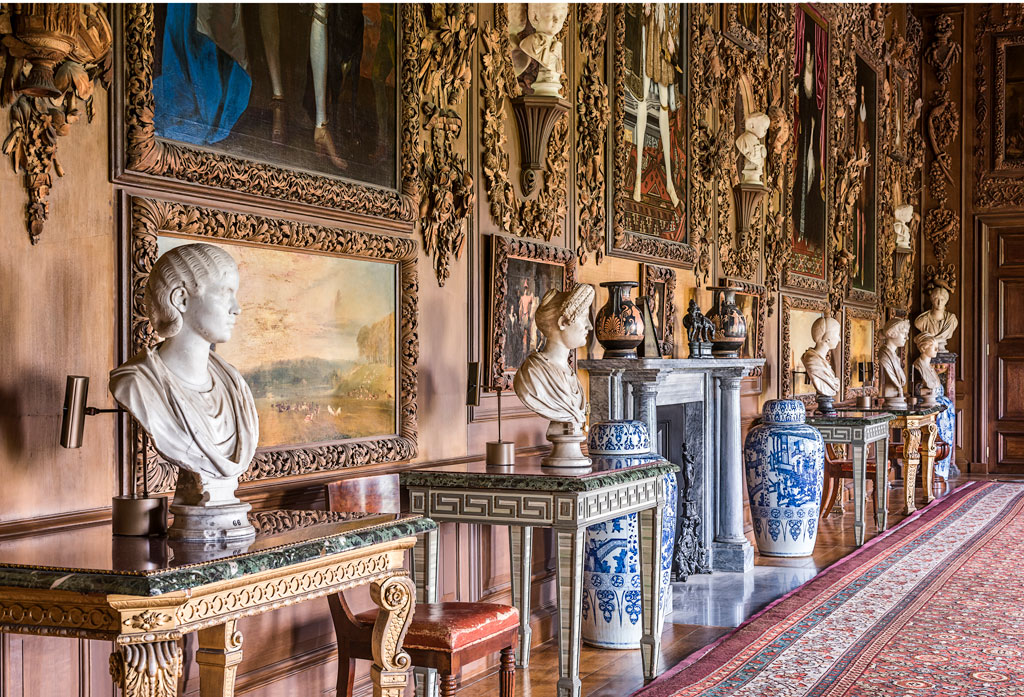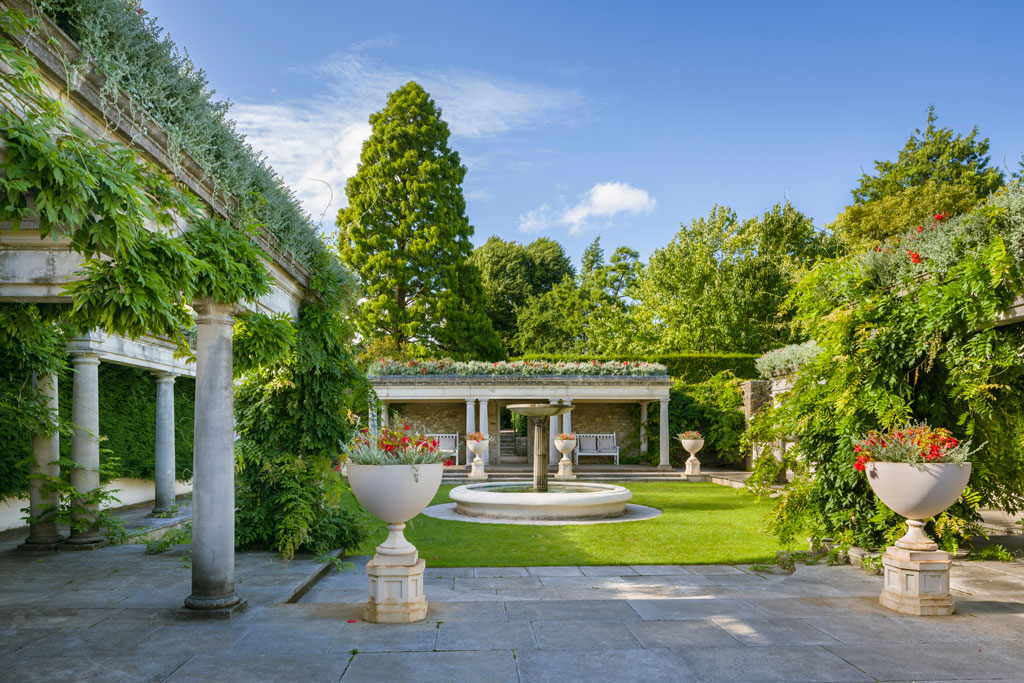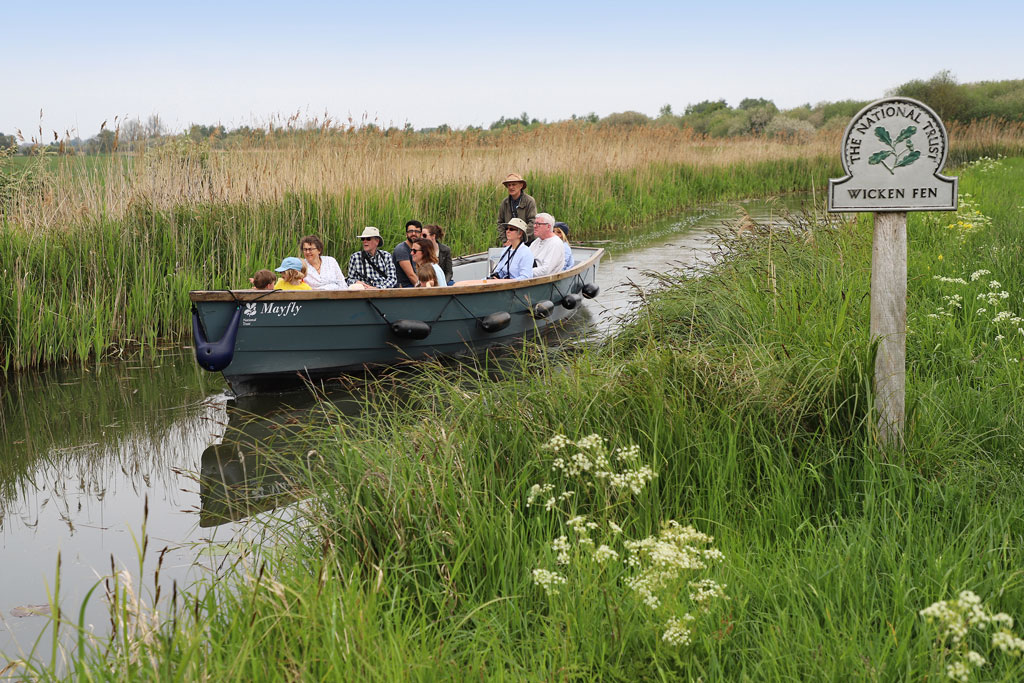
As the National Trust, chief custodian of the nation’s heritage, celebrates its 125th anniversary, we visit three properties that reveal the remarkable breadth of its scope.
Of the sumptuous historic properties that grace the pages of this magazine, how many would still exist were it not for the National Trust? Without the vision and ambition of this much-loved organization, countless national treasures – now preserved, in the Trust’s words, “forever, for everyone” – would long ago have been scooped up by avaricious developers.
It was with a typically Victorian mix of high idealism and unassailable brio that the National Trust for Places of Historic Interest or Natural Beauty was founded by a trio of nature-loving philanthropists in 1895. Chief among them was the indomitable Octavia Hill, a pioneer of affordable housing whose experiences of the cramped conditions of her urban tenants encouraged her to seek protection for London’s remaining green spaces. Dismayed by the relentless onslaught of the Industrial Revolution, Hill and two likeminded allies – Hardwicke Rawnsley, a charismatic Lakeland clergyman, and savvy lawyer Sir Robert Hunter – realized that the only way to preserve the places that mattered was to establish an independent charity with the financial muscle, backed by legal powers, to acquire property as it became available.
In its early years, the Trust focused on saving open spaces and rescuing historic properties from demolition, and it was not until the middle of the last century that it began the work for which it’s perhaps best loved today: conserving and restoring Britain’s great country houses and gardens.
As society went through profound changes after the Great Depression and the Second World War, aristocratic families increasingly found the costly upkeep of their crumbling stately homes untenable. The Trust’s Country Houses Scheme enabled landowners to escape crippling death duties by donating their country piles to the nation, with the owners – now tenants – allowed to retain residency rent-free in return for the minor indignity of welcoming the paying public.
And so it was that Petworth House, along with 700 acres of magnificent Capability Brown-designed parkland in the South Downs, was gifted to the nation by Edward Wyndham, 3rd Lord Leconfield, in 1947.

For lovers of art, there are few greater spine-tingling pleasures than strolling through Petworth’s opulent State Rooms. Immortalized in a series of atmospheric
views by JMW Turner, this fine Baroque mansion is an extraordinary testament to
the art-collecting prowess of the influential and colourful Percy family, who over many centuries of patronage amassed perhaps the finest array of art and sculpture in any country house in Britain.
Wandering the rooms, stunningly restored to the style of the house’s 19th-century Golden Age, you’ll find walls crammed with major works by van Dyck, Titian and Gainsborough – among many others – alongside Louis XIV furniture, classical statuary and Sèvres porcelain. Above the Grand Staircase, a dazzling ceiling mural by Louis Laguerre retells the story of Prometheus and Pandora; delicate limewood carvings by Grinling Gibbons, awash with intricate detail, leap from the walls of Carved Room.
Above all it is Turner with whom Petworth will forever be associated. A lifelong friend of the philanthropic and unconventional 3rd Earl Egremont (who, it is rumoured, fathered 43 illegitimate children), Britain’s foremost landscape painter came here year after year, inspired by the creative atmosphere the Earl encouraged to produce some of his greatest works. No fewer than 20 Turner masterpieces hang across the house. You can feel his presence in every room.
Two hundred years on, Petworth is once again being transformed into a living house of art, as for 2020 the National Trust installs a resident artist’s studio and Skyscape, an exhibition from Oxford’s Ashmolean Museum inspired by Turner’s expressive skies. It promises to be a fitting celebration for this artistic jewel in the Trust’s crown.
Petworth is today one of over 300 heritage buildings in the Trust’s portfolio, which these days increasingly encompasses properties – such as a courtyard of humble Victorian back-to-back houses in Birmingham – that reflect the lives of ordinary working people, as well as the rarefield world of the vanishing aristocracy. Add to this its fabulous collection of over 200 gardens, ranging from grand formal creations to botanical treasure-troves zinging with vibrant colour, and you have the largest array of historic wonders under single ownership in Europe.

Nestling in the Vale of Glamorgan, Dyffryn Gardens is one of the Trust’s most exciting acquisitions of recent years. A century ago, Reginald Cory, heir of a coal-mining empire, transformed his father’s estate into the most extravagant Edwardian garden in Wales. A passionate horticulturalist, Cory financed plant-hunting expeditions across the globe, tracking down exotic species to fill the gardens. He amassed the largest collection
of bonsai in the world, and the dahlia garden alone spanned over 600 varieties.
After the Corys sold up in the 1930s, Dyffryn’s fortunes ebbed and flowed, and by the time the Trust took over in 2013, decades of neglect had set in. Seven years on, the gardens are flourishing once again, an ambitious programme to restore them in full swing. You could easily lose a day sauntering the sweeping lawns, exploring the voluptuous herbaceous borders, and strolling the arboretum – magnificent in autumn, when the acers turn rich shades of crimson, orange and yellow. The intimate garden rooms are particularly enchanting – in summer, the delicate fragrances of the Mediterranean Garden will transport you to an Italian hillside – and don’t miss the glorious Pompeian Garden, complete with grand colonnade, loggia and a central fountain.
Safeguarding spectacular houses and gardens may be the most visible aspect of the Trust’s work, but ever since its earliest days the protection of the natural environment has been at the centre of its mission. Tackling the threat of climate emergency and reversing the alarming decline in Britain’s wildlife is now at the forefront of the agenda.
Nature is certainly thriving at Wicken Fen in Cambridgeshire, the first nature reserve ever to come into the Trust’s care, way back in 1899, and one of its greatest success stories.

Spread out beneath wide-open, ever-shifting skies, the pancake-flat fenlands of eastern England are one of Britain’s most mysterious and ethereal landscapes. This was once a vast, inhospitable wilderness of boggy wetlands, navigated by remote marsh-dwelling communities who eked out a harsh existence harvesting sedge and cutting peat. The fens were systematically drained from the 17th century onwards, and now just 0.1 per cent remain undrained – making the precious original habitat conserved by far-sighted Victorian entomologists at Wicken Fen something of a latter-day Noah’s Ark.
Wicken Fen’s sedge fields, marshlands and grassy meadows, cut through by ancient lodes (man-made watercourses), are home to more wildlife species than anywhere else in the UK. In summer, the meadows are alive with the gentle chirruping of warblers, and the call of cuckoos that use their nests as hosts, while myriad dragonflies perform aerobatic displays along the waterways; in winter, harriers and barn owls swoop in to roost against fabulous late-afternoon sunsets; in spring, you might spot grass snakes swimming in the clean, chalky lode and hear the boom of bitterns from the reed beds.
Perhaps the most remarkable thing about Wicken Fen, though, is the rate at which it is expanding. From a two-acre patch at the end of the 19th century, there are now almost 2,000 acres of fen in the Trust’s care, crisscrossed with boardwalks and foot- and cycle paths (students often pedal through from Cambridge, en route to the magnificent cathedral at Ely), with plans in place to extend to an astonishing 13,000 – as far, in fact, as Cambridge itself. And as rewilding gathers pace, more and more species are flooding back, making this curious remnant of a vanished landscape a beacon for the future.





 © 2024
© 2024